Last Updated on July 15, 2023 by a Friendly Gardener
Devil’s Ivy plants, also known as the Pothos, are among the most popular houseplants in the entire world. They are also among the easiest houseplants to care for as they are very undemanding. So, when you see a Pothos plant developing issues, it can be quite disheartening especially when leaves begin to curl.
There’s no reason to worry as most issues can be quickly resolved, but it is crucial that you properly identify the cause so that the correct treatment is applied.
Why Are My Devil’s Ivy Leaves Curling?
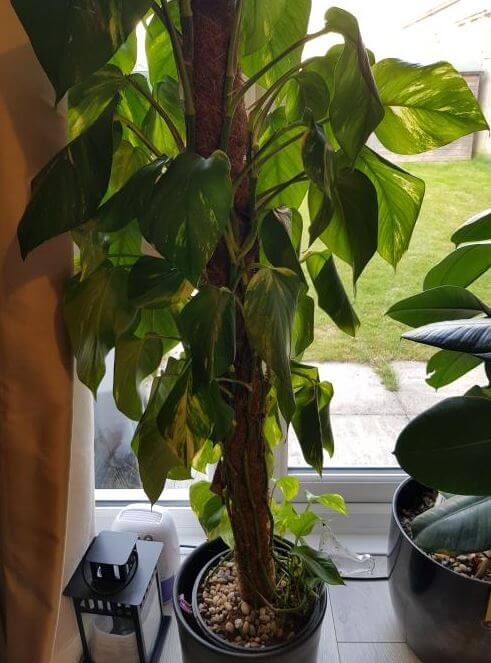
Underwatering
A very common motive for devil’s ivy leaves curling is underwatering. When the soil is without moisture, your plant can die. Consider curling foliage an early symptom when you can still repair the issue. Symptoms that indicate the situation is more severe include brown leaf tips, dried brown leaves, wilting stems, and leaf drops. You must be sure this is the reason before increasing the amount of water you furnish as excessive water can be just as damaging.
What to do
Remove the plant from its container and check how moist the soil mix feels. If it feels very dry, then it is probable underwatering is the problem. In this case, check the plant’s roots to see if they are dehydrated and crispy as this indicates the plant has been without sufficient water for some time. If underwatering is the culprit, do not soak your plant. Begin watering your plant with small doses and continue doing so daily for an entire week to avoid shocking root systems with an overdose of water.
In the future increase your watering frequency slightly but make it a point to monitor the soil’s moisture content. A moisture meter can help you with this.
Overwatering
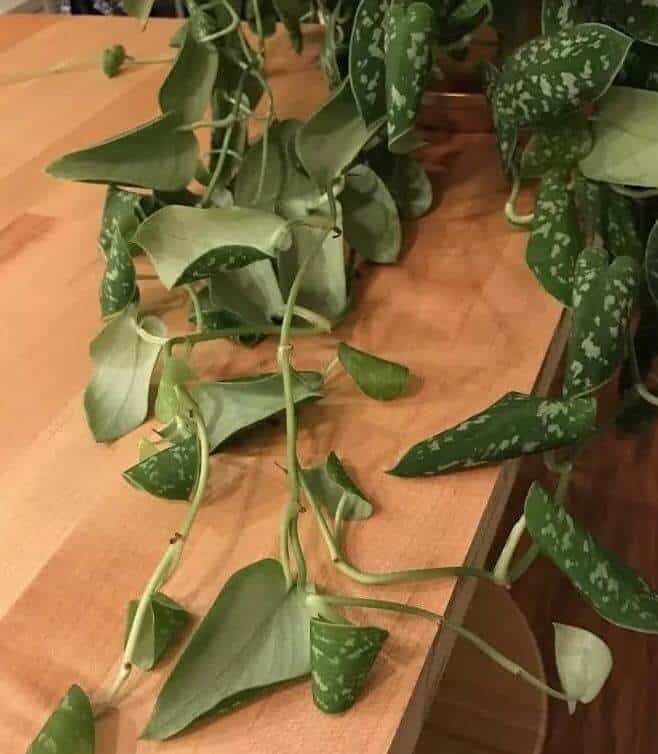
Curling leaves can also indicate overwatering. Just as with underwatering, overwatering with a plant root system left sitting in soggy soil will damage the roots impeding the absorption of both water and nutrients. Devil’s Ivy plants prefer a soil mix that is rich in organic matter with a pH measuring between 4.5 and 6. To help your plant mix a good quality potting soil with fine sand, perlite, or similar to guarantee root aeration and proper drainage.
What to do
Control how moist the soil bed is to verify if it is waterlogged and soggy. If soil is overly moist and dark in color, root rot may be afflicting your Pothos. If your plant is indeed sitting in water, you need to intervene immediately. Remove your plant from the soil. Check the roots to verify if they are dark and mushy as well as emitting a foul smell. If so, you need to trim off any infected roots and treat the remaining healthy roots with a fungicide. Repot your plant in a new pot with fresh soil. You can use the same pot if you clean and sterilize it. Wait a few days before resuming water and water sparingly.
Devil’s Ivy plants are usually fine with a single weekly watering during the growing season. In cooler seasons, watering once every couple of weeks should be adequate. If you are unsure about how much and how often you need to water, invest in a moisture meter.
Low Humidity Levels
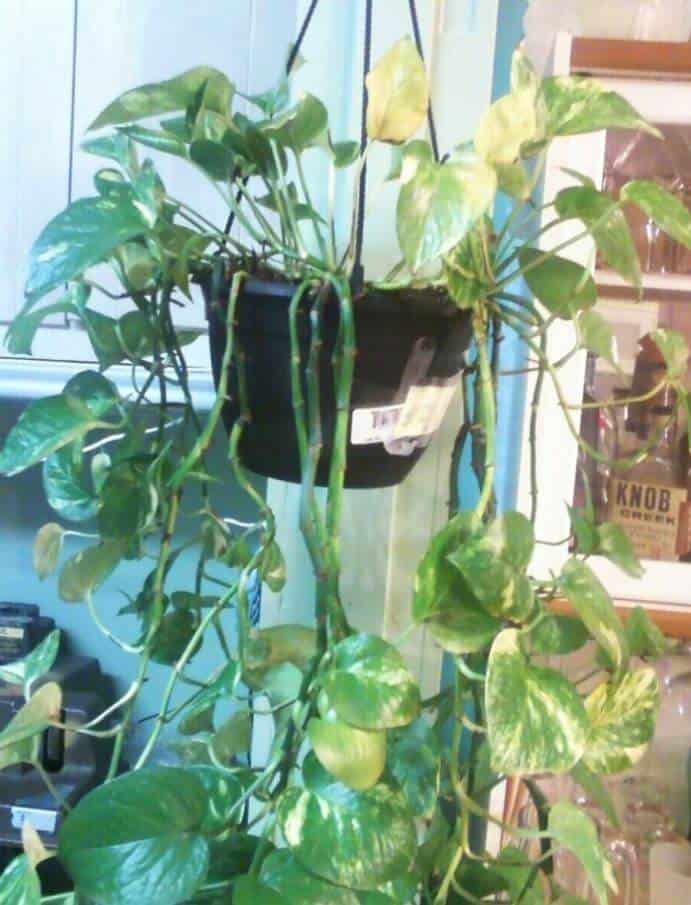
Overly dry air is not lethal, but it can cause your devil’s ivy leaves to curl. With low humidity levels, you may also notice brown leaf tips developing. Many plants will curl their foliage to prevent the loss of moisture by reducing the leaf surface through curling.
What to do
There are a few things you can do to combat low humidity levels.
- Acquire a space humidifier
For plant parents and indoor gardeners, especially those with more than one plant, a space humidifier will avoid any problems you have with overly dry air due to climate, heating, or air conditioning.
- Shower your plant
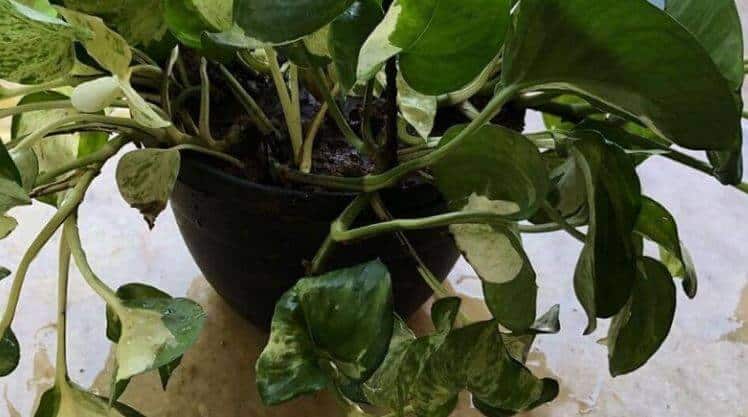
Stick your plant in the shower and turn it on using low shower pressure. This will improve humidity, and remove pests, and dust from your plant’s foliage.
- Mist Devil’s Ivy leaves regularly
If other options are not possible, consider working misting into your plant’s care routine. Regular misting can raise immediate humidity although it is not a permanent solution unless performed assiduously.
Excessively High Temperatures
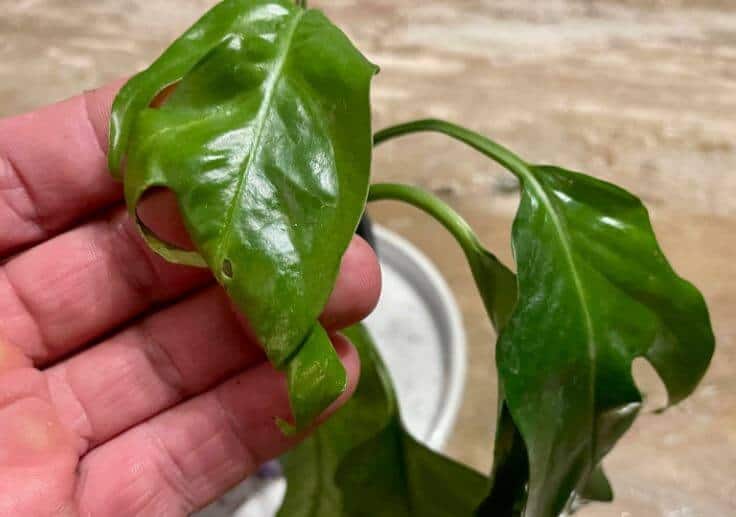
Devils Ivy leaves curling can also indicate that environmental temperatures are too high. Heat stress can cause a Pothos plant to curl its foliage. Curling leaves reduce the foliage surface to lose less moisture. If your Pothos is too close to a window it may receive too much heat and too much sunlight and damage the plant. The same is true if your plant is near a heating vent, oven, or radiator. Remember that the Pothos likes shade as opposed to direct sunlight. Strong light can burn foliage. Your Pothis needs approximately four hours of bright indirect light daily.
What to do
To control temperatures, acquire a digital thermometer to verify environmental conditions. If the environment is too hot, move your plant to a cooler location. Keep in mind that your Devil’s Ivy likes a temperature that measures between 75°F and 90°F. Anything higher or cooler will create issues for your plant.
In Conclusion
There are a variety of environmental and care conditions that can cause your Devil’s Ivy plant to curl its leaves. Check your plant weekly for signs that it is experiencing stress. This can help you identify issues early on. By identifying problems early, you can intervene to protect your plant from conditions that can cause severe damage.

